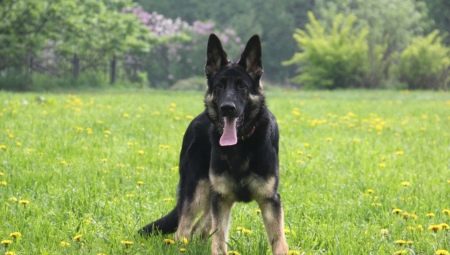East European Shepherd Dog is a popular breed of dog in the territory of all CIS countries. From its ancestor, the German Shepherd, this breed is distinguished by a massive physique, a sharper mind and remarkable watchdog skills. In this article you will get acquainted with the characteristics of the breed of the East European Shepherd, as well as the features of its content.
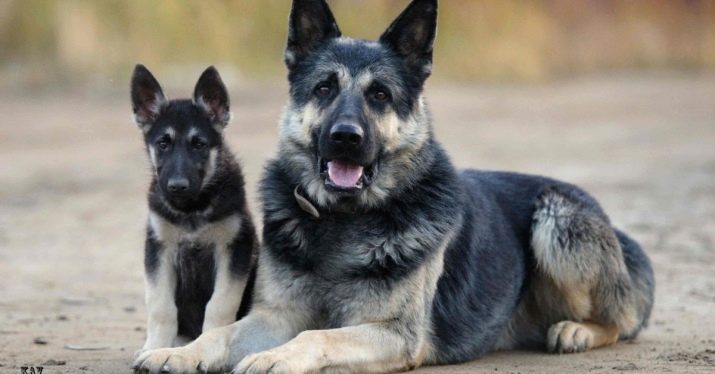
Origin history
Attempts to create this breed were undertaken at the beginning of the twentieth century. Around the 1920s, active work began on the development of a new breed, the ancestor of which was to become a German shepherd. Dog handlers sought to create a more hardy, socialized and massive breed. Unfortunately, at that time, the breeding project did not receive the proper financial support, and the process of mass withdrawal of the Easterners remained in limbo.

During the Great Patriotic War, many individuals of the East European breed actively participated in hostilities: they brought food to the partisans, hunted down enemies, found mines, wounded, and helped with the passage of food across rivers. After the end of hostilities, this breed became associated with true patriotism and devotion to humanity.
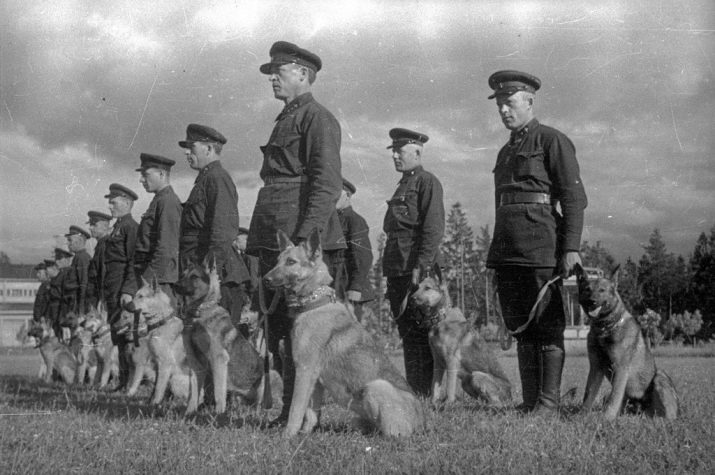
Despite this, serious attempts to breed new representatives of this breed began to be made only after the Second World War. The name of the breed was given by the world famous general G.P. Medvedev, which already in 1945 called for to award this breed of dogs with official status for its services to the USSR.The very first breed standard was adopted back in 1964, the next in 1976. It is worth noting that there was no official separation of this breed from German representatives. The breed was considered the Soviet version of the German Shepherd.
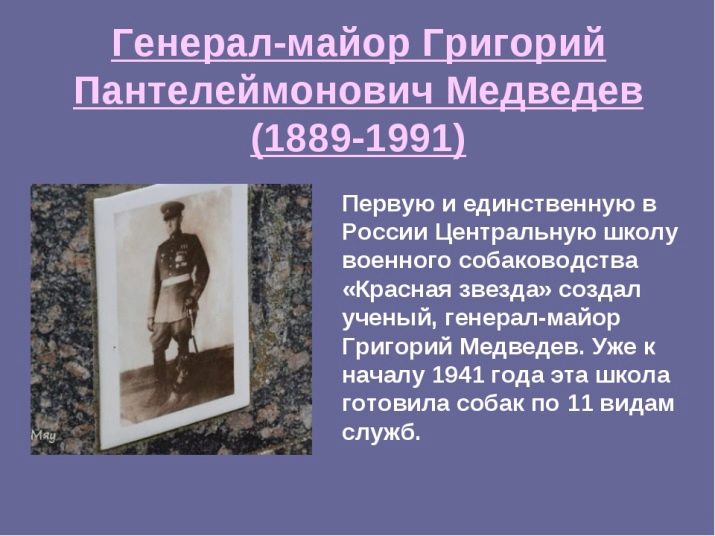
Until the end of the twentieth century and the collapse of the Soviet Union, this breed was widely appreciated among Russian dog handlers. - there were many kennels, where everyone could buy this dog - a symbol of a glorious victory in the Second World War. However, with the collapse of the Soviet Union, work on the selection of this breed unexpectedly stopped and even began to be condemned. The Easterners began to be identified with the times of Stalin's repressions. At some time, began a general procedure for the elimination of this breed, which ended only at the beginning of the XIX century.
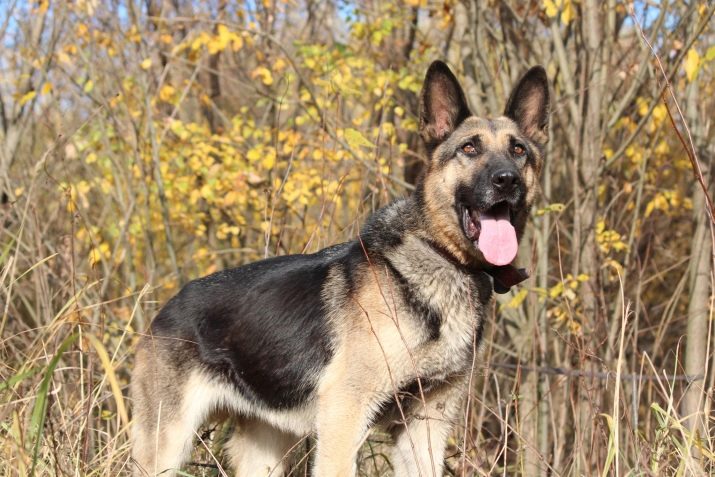
Thanks to caring breeders, this breed is bred to this day. A bit later, cynological organizations began to recognize it throughout the entire Russian Federation.
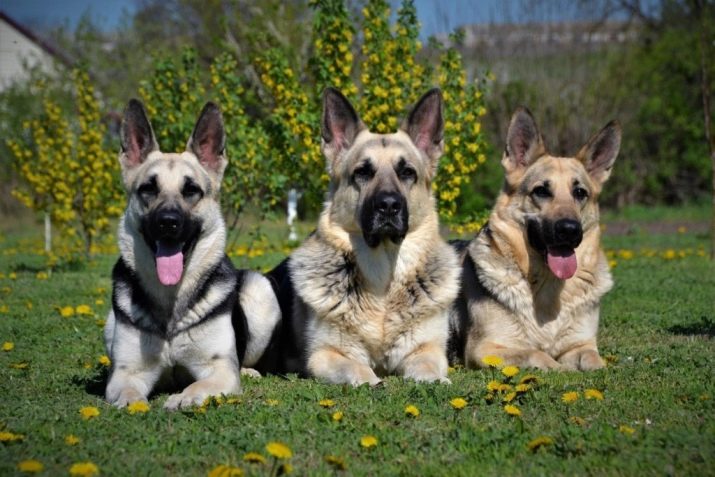
Breed features
To have a rough idea of the exterior of the East, you should refer to the general standard of 2002 adopted by the RKF (Russian Canine Federation).
- Proportional long wedge-shaped head. The transition from the forehead to the muzzle is noticeable, but smooth. Lips fit tightly to the jaw, do not hang down. The nose is black, well developed. The ears are small, in shape they look like an isosceles triangle. The eyes are oval, the color of the iris is brown or dark.
- Well developed jaw with 42 teeth.
- Wide massive neck.
- A large, wide chest is oval in shape, the withers are clearly visible, the stomach is tightened, without folds.
- The back is straightened, the croup is rounded.
- Large and long limbs with well-developed muscles. The paws themselves are round type, the pads are soft, weakly covered with wool, collected.
- The coat is of a hard type and medium length, evenly distributed throughout the body.
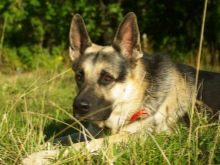
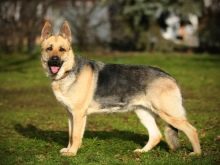
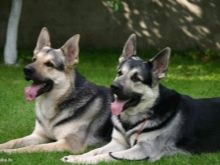
A description of the general characteristics of this breed is also presented below.
- Average weight. Females weigh slightly less than males - from 30 to 50 kg, males - up to 60 kg.
- Medium height East at the withers is 72-76 cm.
- Color. As a rule, black and tan or pure black. There are also individuals with a zonal color (limbs, tail, chest), where silver, white and red colors are found.
- Life span. On average, representatives of this breed live 10-11 years, in ideal conditions of detention, this period can be increased to 15 years.
- Character. Balanced, loyal, wonderfully amenable to training.
- Watchdog qualities. With proper upbringing, they can become professional watchmen and guides.
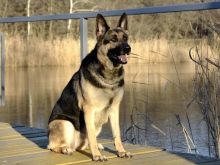
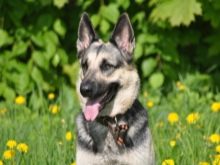

Nature and behavior
Despite their formidable appearance and a wonderful fighting exterior, the dogs of the VEO breed are distinguished by their good-natured, loyal and assiduous character, thanks to which they become real family members. Below we will consider the character features of these dogs, which every breeder needs to know about.
- Attitude to the owner. Dogs of this breed are distinguished not so much by affection as the rest of the dog breeds, but by fidelity, devotion and dedication. This is a very smart breed of dog that is able to obey the owner exactly, as well as protect him in dangerous situations. Some individuals of the East are used as guides for the blind or for people with disabilities. VEOs are not inclined to occupy a dominant position in relations; they fully trust the owner and his instructions.
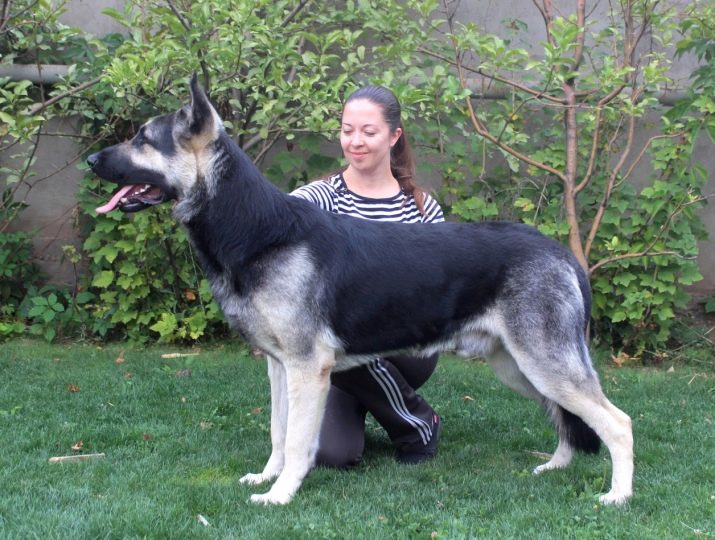
- Attitude towards guests and strangers. The East European Shepherd here acts more as an observer than a participant in communication. The Easterners will not selflessly wag their tail to every passerby and obviously will not treat with love the one with whom the owner is talking. Instead of fumbling and clutching their hands, they step aside and closely monitor the actions of the stranger and the owner himself. These dogs very sensitively determine the tension of the situation, perfectly distinguish notes of aggression and anger in the conversation.At the slightest manifestation of inadequacy on the part of a stranger, the Orientals can growl warningly or even bite their teeth.
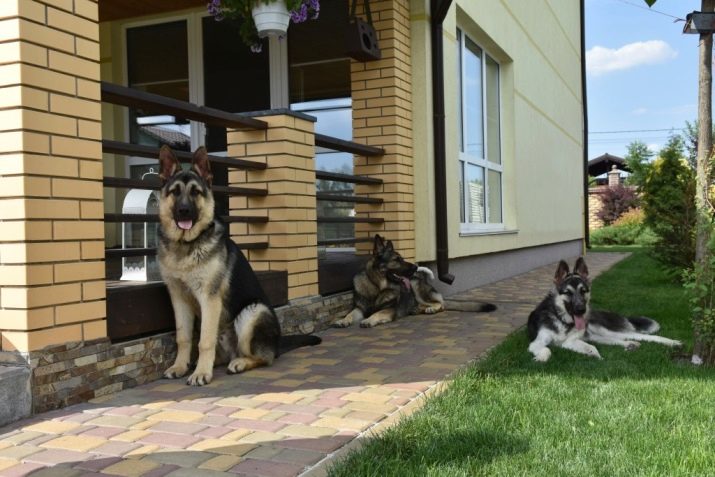
- Relation to other pets. In relation to cats, the breed VEO takes a neutral position. If the dog and cat have their own personal zone and none of the pets violates the boundaries of these zones - be sure that the animals get along and even can play together. However, in this case, this breed of dog will take the lead in fun and games. As for the rest of the domestic animals like turtles, parrots and hamsters, the Easterners for the first time will not pay any attention to them at all. If they notice that the owners respect and care for these pets, they will also treat them with caution and care.

- Attitude towards children. If you buy a young puppy in an apartment for young children and raise him side by side with the children, then you should be prepared for two outcomes. The first outcome is that the child’s bond between the dog and the child will only strengthen their relationship and make the puppy a better friend and protector for the child. The second outcome is that young children can simply torture a puppy or an already adult dog with constant harassment, which will make the Easterner aggressive and embittered. These dogs are able to endure annoying and harassing for a very long time, but young children do not know a sense of proportion, and therefore, until more or less conscious age, children of dogs should be kept away from them.
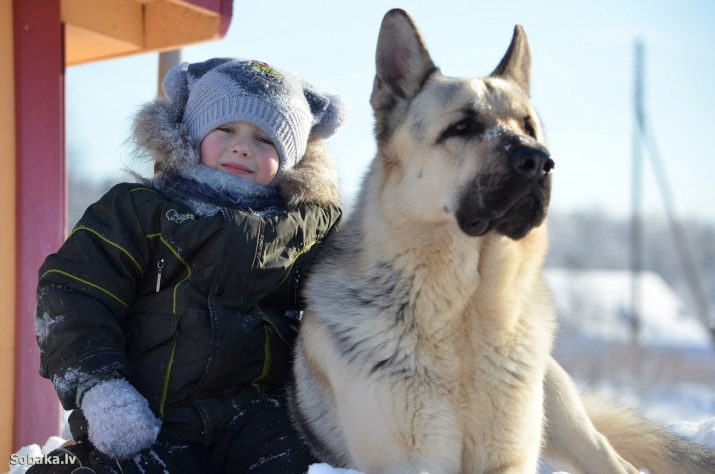
- Security qualities. The East European Shepherd has long established itself as a wonderful guard and watchman. If a dog notices at least a minimal manifestation of aggression towards its owners, then it immediately becomes in a defensive position and can protect them up to self-sacrifice. The dogs of this breed have the same attitude to their territory, which they are also able to protect fiercely - that is why they are chosen as watchmen in paid parking lots or in private houses.
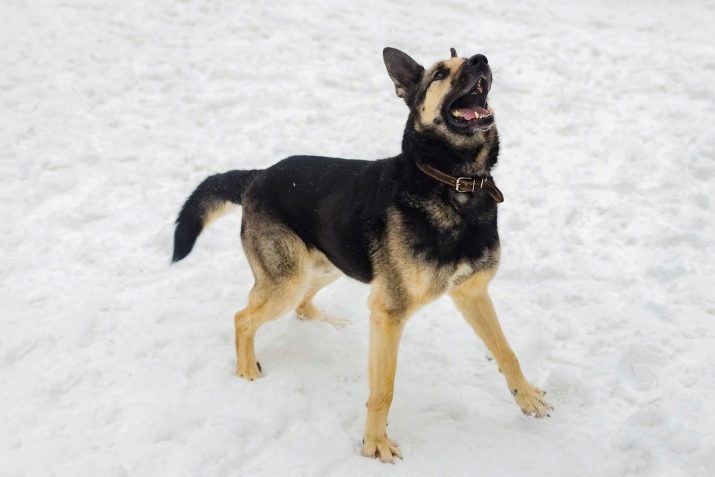
How to choose a puppy?
Not only the health of your future pet, but also his innate skills, heredity and fitness for training depend on the right choice of a puppy. In the list below, you can familiarize yourself with the points that you should pay attention to if you want to purchase an Oriental.
- Place of purchase. You should immediately understand that the most successful, healthy individuals with excellent pedigree are sold only in specialized nurseries. This is where you should buy the East European Shepherd if you want the puppy to have the opportunity to participate in competitions and other events. Buying this dog with your hands, even with a full set of documents, you can never be sure of the authenticity of the information provided. In addition, nurseries with a good reputation should always have documents that confirm permission to develop a particular breed. Before buying a puppy in a kennel, evaluate the conditions of detention in it, the quality of food and rest.
- Parents. The pedigree and related lines are the second thing that you should pay close attention to. Despite the fact that the breed’s adaptability to training is in the genes, it will be much safer to train the dog, knowing that its parents have undergone identical training or performed the same work. In addition, according to the documents of parents, you can find out about hereditary diseases and defects that can occur only over time.
- Behavior and activity. When choosing a pet, you should pay attention to his behavior - active, joyful and positive individuals have a much greater chance of successfully completing training. Perseverance and good breeding can be instilled, but enthusiasm and energy are unlikely. Carefully monitor the general condition of the pet.Puppies with the following symptoms should not be taken: lacrimal paths near the eyes, felted hair, wet hair at the anus, limping when moving, dirty ears. In addition, do not forget to evaluate the appearance of the pet, based on the standards of this breed, which were described above.
- Documentary base. If the supplier of puppies does not have documents about their vaccinations, as well as other papers confirming the birth and pedigree of the puppy, this is a serious reason to refuse to buy a pet. There must be a veterinary passport, metric and pedigree.
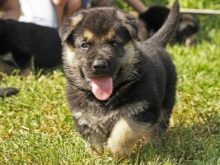
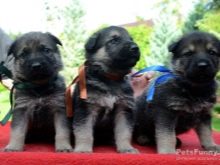
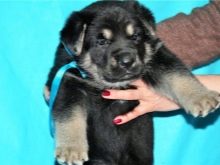
The main problem in buying a purebred Oriental is not health and behavior, but the authenticity of the documentary base and family tree. Recently, there have been more frequent cases when it was the German breed that was sold under the guise of an East European shepherd. A distinctive feature of adult dogs of the German and East European Shepherd is the slope of the back. If the Easterners have it relatively straight, the Germans have it beveled to the sacrum and gradually descend to the tail.
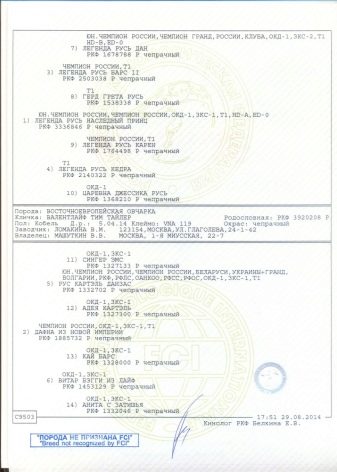

Monthly height and weight
Below you can familiarize yourself with the table where standard indicators of growth and weight of the East European Shepherd for a certain age are indicated. As you can see from the table below, at the age of 7 to 9 months, regardless of the sex of the dog, a period of complete adulthood begins. After this, the dog practically does not grow, but only gains muscle mass. In dogs of the VEO breed, the ears rise about six months (individuals are known whose ears rose unevenly from 3 months). An adult female weighs, as a rule, a little less than a male, while the male musculature grows even after 1 year, and in a female, it stops at 10-11 months.
Age (months) | Male height at withers (cm) | Bitch growth at the withers (cm) | Average weight (kg) |
1 | 23-27 | 23-25 | 3-5 |
2 | 35-38 | 33-36 | 8-10 |
3 | 43-47 | 41-46 | 12-15 |
4 | 50-55 | 48-53 | 15-20 |
5 | 55-60 | 55-57 | 20-25 |
6 | 60-65 | 57-65 | 25-30 |
7 | 65-68 | 65-66 | 30-35 |
8 | 68-70 | 66-67 | 35-40 |
9 | 68-73 | 66-68 | 35-40 |
10 | 68-75 | 66-69 | 35-40 |
11 | 68-75 | 66-69 | 35-40 |
12 | 68-75 | 66-69 | 35-40 |
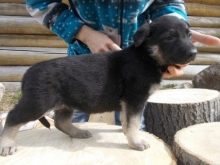
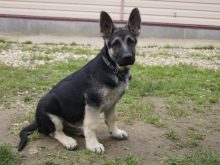
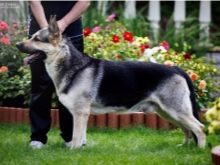
Maintenance and care
The rules for the care of dogs of the breed VEO are not very complex or unique. All conditions are generally available for the care of any breed of domestic dog. Most of the recommendations below are general and can also be used to care for a German shepherd.
- Regular physical activity. This breed will not be able to appease with games and rare entertainment, they also do not tolerate closed space. The breed needs regular walks, even in the harshest weather.
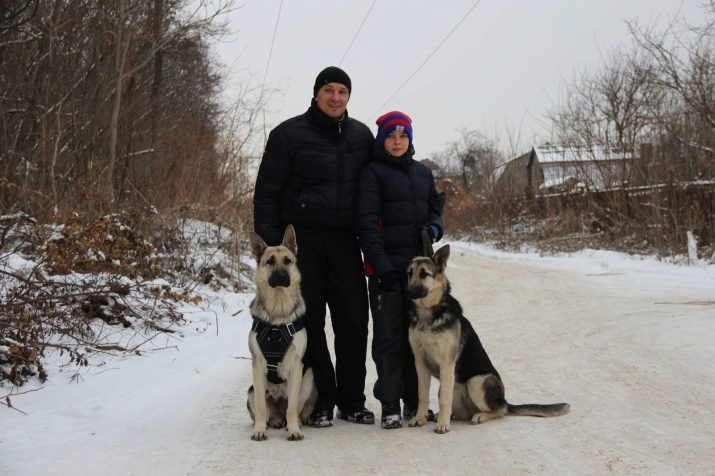
- Place of detention. These dogs are born watchmen, and therefore they feel great in open booths and aviaries in the fresh air. A thick and dense hairline protects the animal from even the most severe frosts.
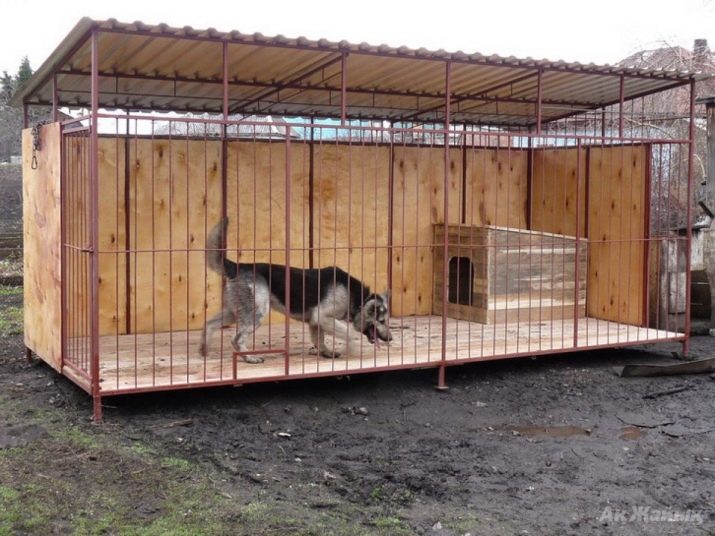
- Regular hygiene procedures. As with any other pet, you should regularly brush your dog’s ears, comb your hair, rinse your eyes, and monitor your teeth and claws. All these procedures should be carried out at least 1 time per week, especially if we are talking about an exhibition individual.
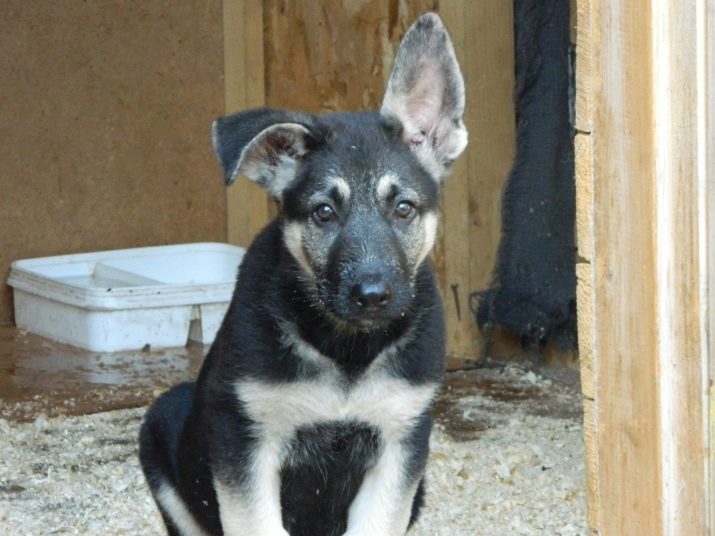
- A haircut. As a rule, the Easterners do not differ in such a significant hairline as shepherds. They have a dense hairline of medium length, which if it needs a haircut, it is only in light and corrective. Do not think that a large amount of hair will interfere with the pet in the summer seasons - sweating in these animals passes through the tongue, and not through the skin. In addition, an animal with short hair can earn skin diseases from long exposure to direct sunlight.
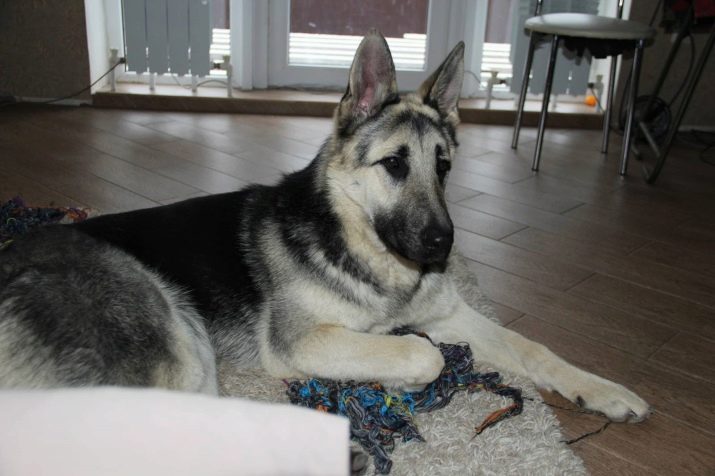
- House. From the very first day, determine one specific place for keeping the pet (in the case of keeping it in the apartment) - it should have its own place or sunbed, where it could come at any time. It is better to choose a dry place in the shade, where there would be an excellent overview of the rest of the apartment. Keep in mind that if the dog was initially raised at home, it will be extremely difficult to accustom her to the aviary.
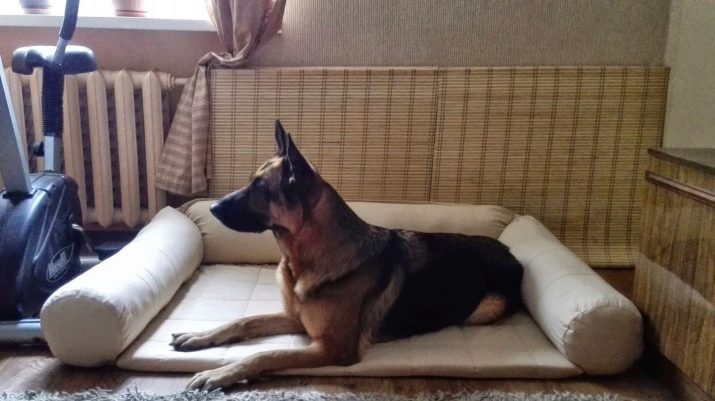
- The washing up. You can carry out a preventive wash with plain water no more than once a month, and cleansing with a special shampoo - no more than 2 times a year. Try to pay more attention to the cleanliness of the coat and the absence of lumps. For combing, it is better to buy round brushes or combs with frequent cloves - such procedures will have a relaxing massage effect on the animal's body.
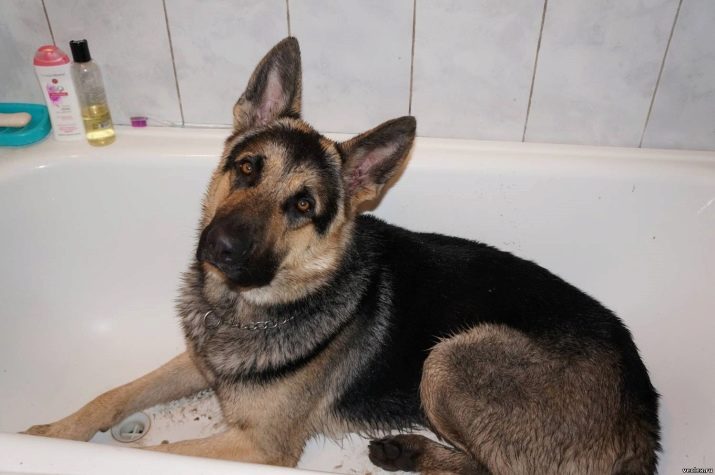
- From birth, your pet should be given several vaccinations against common diseases and viruses. In addition, for the spring and autumn periods, do not forget to treat the pet's coat with flea-preventing compounds. Individuals with fragile immunity will not be prevented by anthelmintic preparations.
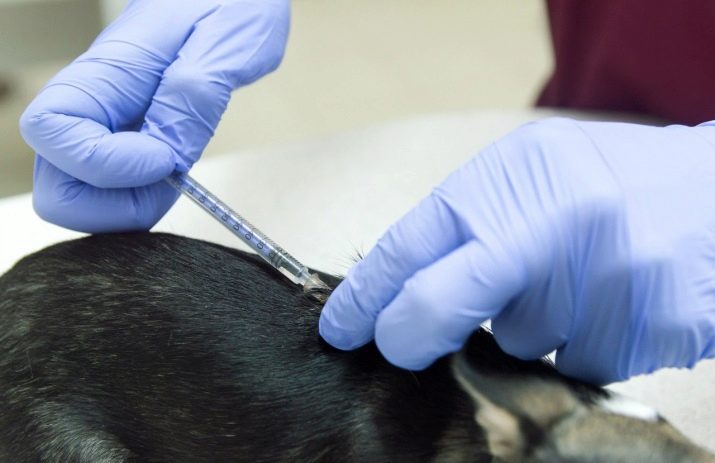
Feeding
Like any pet, the East European Shepherd Dog needs a balanced and regular diet. Not only the activity of the pet, but also its mood, as well as health, depends on the quality of feeding. Below you can find a list of recommendations that should be followed when feeding the east.
- Type of food. Shepherd dogs need regular walks and physical activity, for which they need a lot of strength. When feeding this breed, you can give preference to both ready-made feeds and natural products with a high meat content. Each of these types of food has its pros and cons.
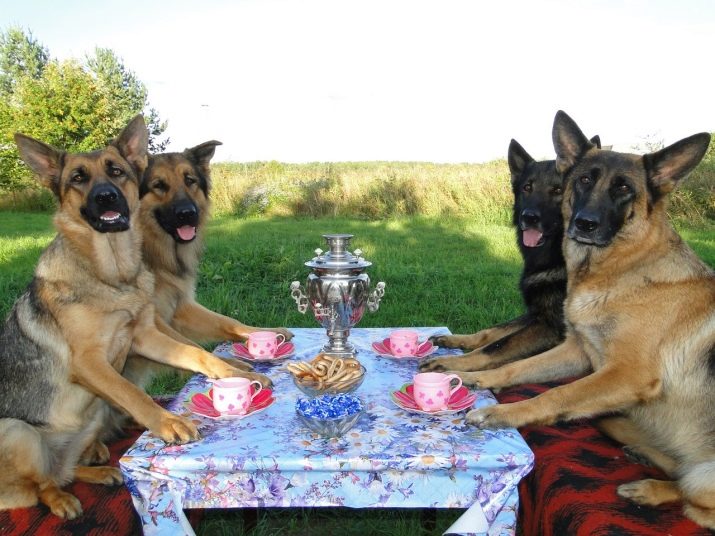
- Frequency of feeding. On the very first day of buying a puppy of the East, decide on the time for serving food - the whole day should be planned, divided into periods of walking and feeding. Babies up to 2 months should be fed in small portions up to 6 times a day, puppies up to 4 months - at least 5 times a day, up to six months - no more than 4 times a day, from six months to 8-9 months it is worth switching to three meals a day, if they are 10 months or older, the regularity of feeding should be reduced to 2 meals per day in large portions of food.
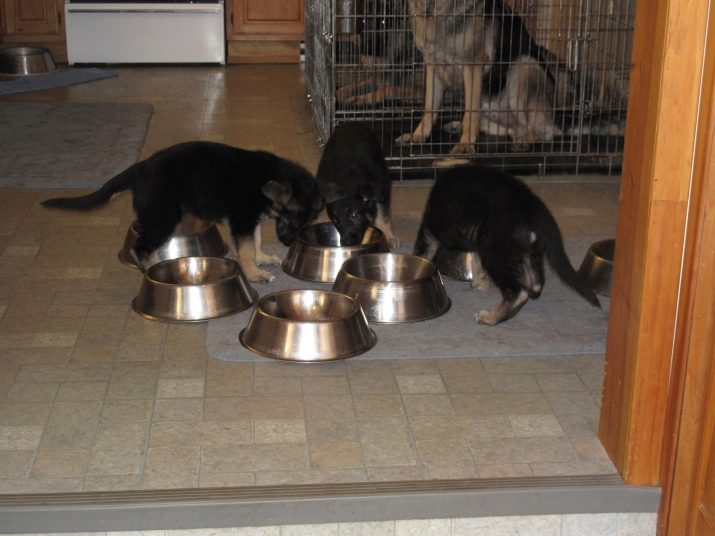
- Feeding time relative to training. Many novice breeders make a huge mistake when feeding a dog before a morning or evening walk. The pet must first do its work on the street, and then receive a dose of food to gain strength the next day or evening. In addition, after a walk and good physical exertion, the Easterners experience a significant improvement in appetite. When choosing natural food in the morning you should give light food - cereals, vegetables and cottage cheese. It is better to leave meat food for the evening.
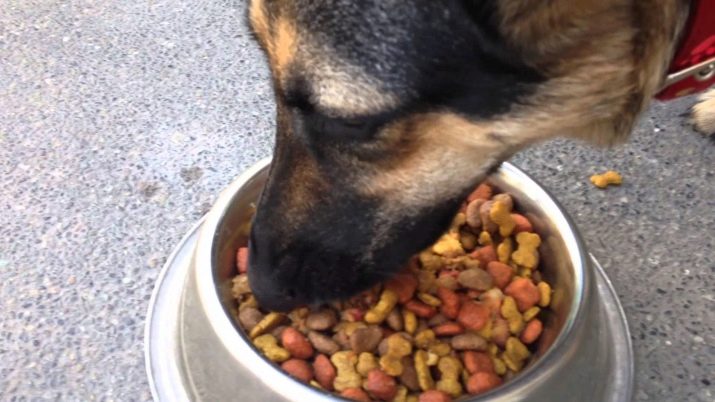
- Subtleties of feed. Food should be served only when the dog is in another room. In a fit of joy at the sight of food, an Easterner can simply turn over a bowl and sprinkle food throughout the apartment. It is advisable to initially buy heavy metal bowls or turn to reinforced screwed options. As soon as the pet has finished eating, immediately remove the bowl of food or thoroughly clean it from food (otherwise the food may deteriorate or become airy).
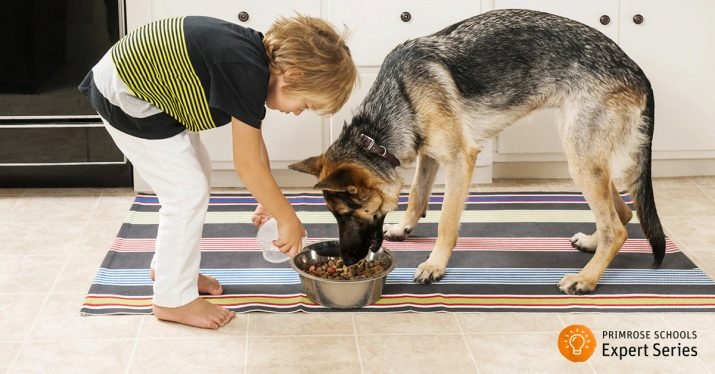
- Serving sizes and doses. As a rule, on ready-made feeds it is indicated exactly how much it should be given to dogs with one weight or another, age and height. As for natural food, portions are determined purely experimentally - make sure that the pet eats everything or leaves food in the bowl. On this basis, increase or decrease the portion.
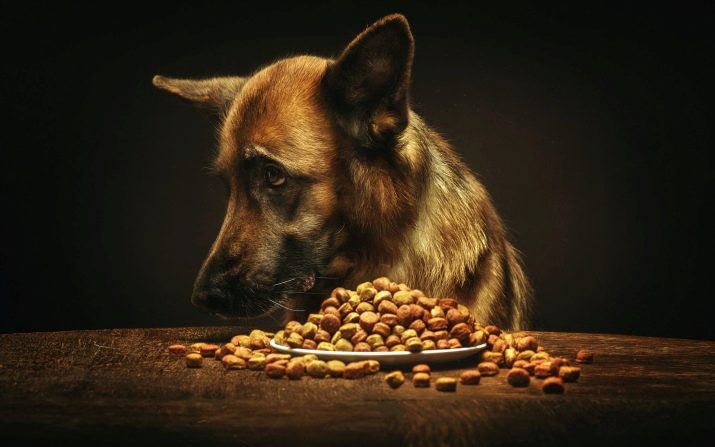
- Nutrition depending on the season. In the summer, the Easterners need more fresh and nutritious food. They need it for an active life, regular training and jogging in the fresh air. As for the winter season, in which the dog does not receive the necessary physical development, it is necessary to reduce the fat content of foods as much as possible (some individuals of the Easterners are predisposed to gain excess weight), as well as increase the amount of vitamins and nutrients. The latter will help the pet cope with viruses and diseases.
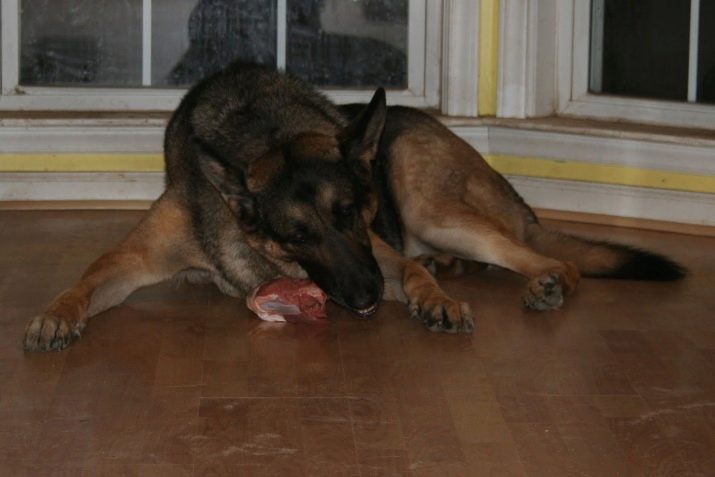
- Water. Fresh, clean water should always be in your pet's access area.Try to choose an accessible room for this, where your dog can easily get into.
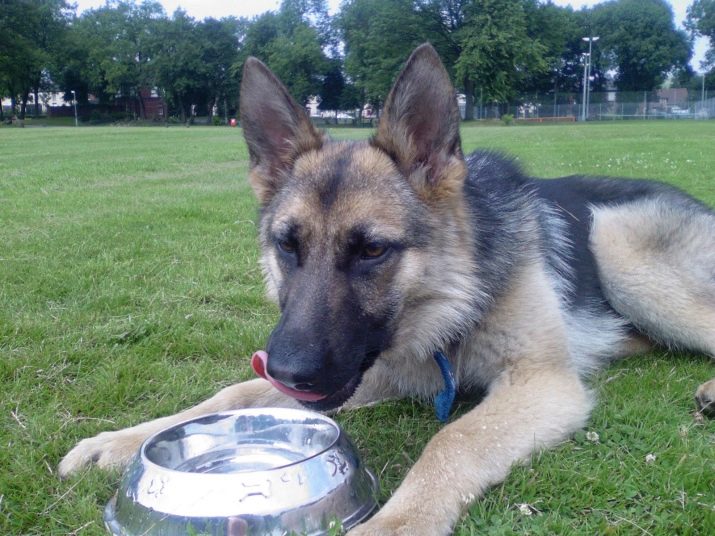
- The balance of natural feed. If you decide to transfer your pet completely to natural nutrition, then keep in mind that the bulk of the diet (at least 50%) in any case should be animal-type foods (meat and offal). The rest is plant products: vegetables, cereals, fruits, as well as some dairy products (cottage cheese is extremely useful for puppies). When choosing meat, it is worthwhile to focus on low-fat options: chicken, veal, beef, and some offal. Try to exclude pork, lamb, various sausages and smoked products from the diet. Of the cereals, buckwheat, rice and oatmeal should be preferred, but legumes, millet and pearl barley should not be given. To make the animal eat porridge better, add pieces of meat or chopped vegetables to them.
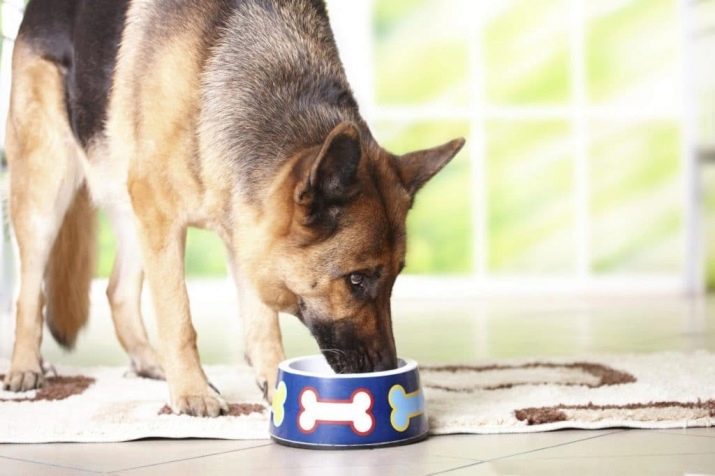
- Prohibited foods. Avoid foods and vegetables with high fat content and acidity. In addition, you should not feed the VEO breed from the table - salted, pickled, spicy and fried products are extremely poorly tolerated by the body.
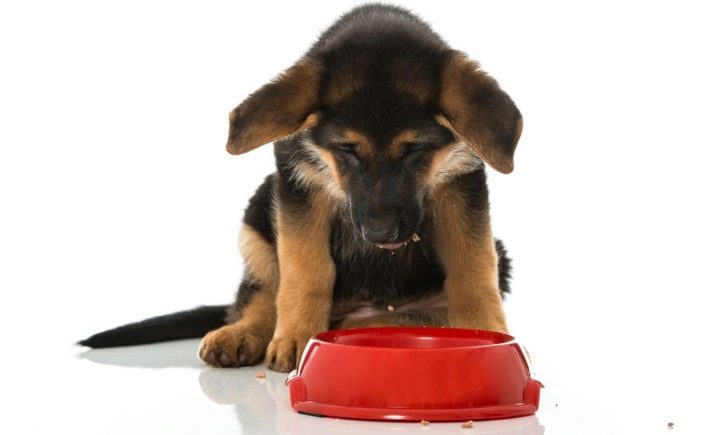
Parenting and training
Obedience and execution of elementary commands is inherent in any breed of shepherd dogs at virtually the genetic level. The owners of this breed are recommended to start training from the very first day of the appearance of the pet in the walls of the apartment.
Before you start training, the first thing you should do is to make your dog feel comfortable surrounded by a large number of people. From early childhood, these animals may feel insecure in the company of strangers, and the sooner you let the dog know that the crowd is no danger, the better. Try to take your pet for a walk in crowded places more often, do not refuse contacts with other animals - dogs and cats. Very soon, the Easterner will get used to the fact that in any situation the owner is nearby and will not give him an insult.
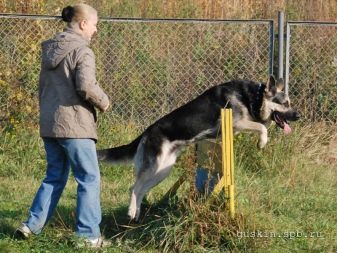
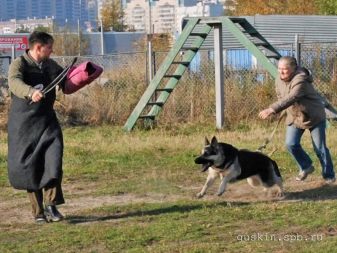
Depending on the age of the dog, you must clearly determine the duration of the training. In the very first months it will be difficult for you to conduct long trainings - it is difficult for any puppy to control for a long time, he constantly wants to play and frolic. At a young age, try to devote to training for 15-20 minutes a day - this will be enough to memorize elementary teams. Over time, the duration of training can increase up to an hour.
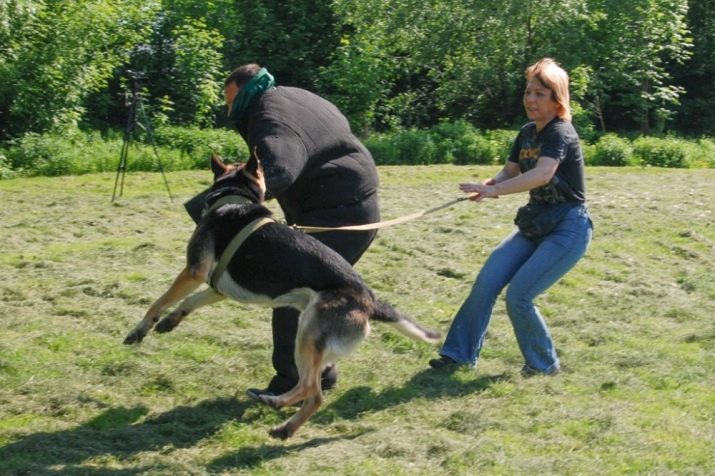
Pets should be trained at a strictly defined time. It is better to choose the trainings themselves later or in the evening, when the main period of activity has passed and the animal wants to relax a bit. If you see that at some point the dog absolutely does not want to train, try again in a couple of minutes. Force it is not worth it - so you will not achieve anything.
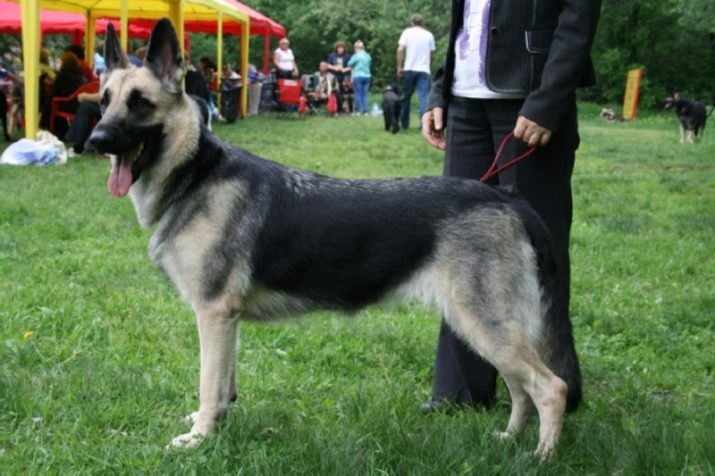
In training certain teams, try not to overdo it by repeating the same phrases and commands 30 times. If at one moment your pet is not given one command, proceed to the other in order to return to the first a little later. The main thing in such training is diversity. You probably remember how boring it was in school years to cram poems and passages from poems. And imagine how boring your dog will be!
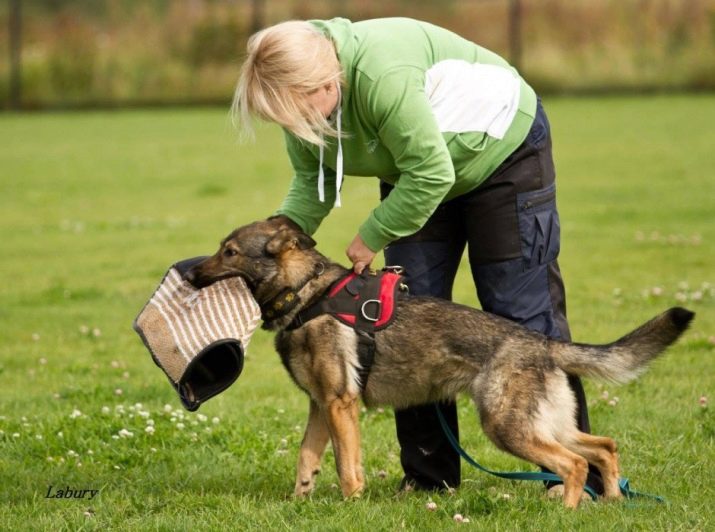
Immediately discard the physical effects on the dog - beatings and injuries are stored in the animal’s memory for a long time and can only do harm: aggressiveness, lack of devotion, unwillingness to engage. If the animal is guilty or does the trick incorrectly, try to put your discontent into intonation or gestures. Shouting at a dog is also not recommended - just like beating, screaming negatively affects the pet's psyche.
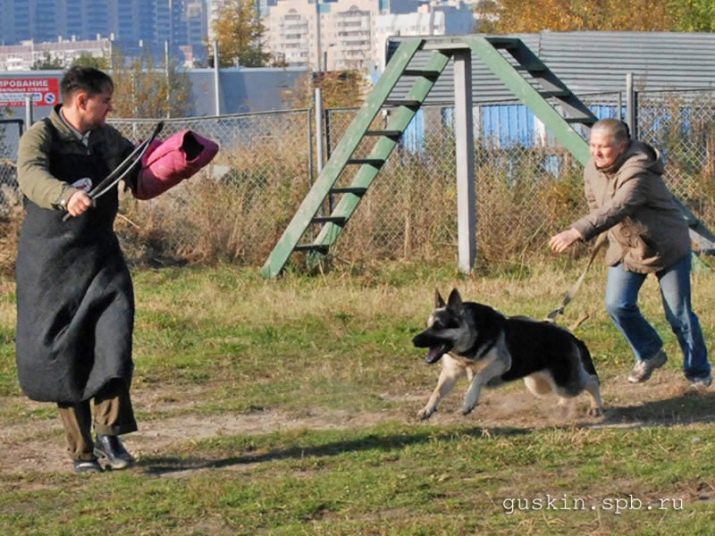
After each successful training, a difficult trick or team, try to minimize your dog.It can be either small delicacies, ordinary strokes or words with an affectionate and approving appreciation. Try not to overload the pet with sweets or tenderness during training - in this case, he will get used to the fact that he will receive treats anyway, be lazy and refuse to perform even elementary commands.

Gestures and facial expressions are additional tools in trainingwith the help of which you can better convey to your pet what you need from him. The fact is that the dog’s brain works based on associations. Any team that is constantly accompanied by a certain gesture will have more success in remembering.
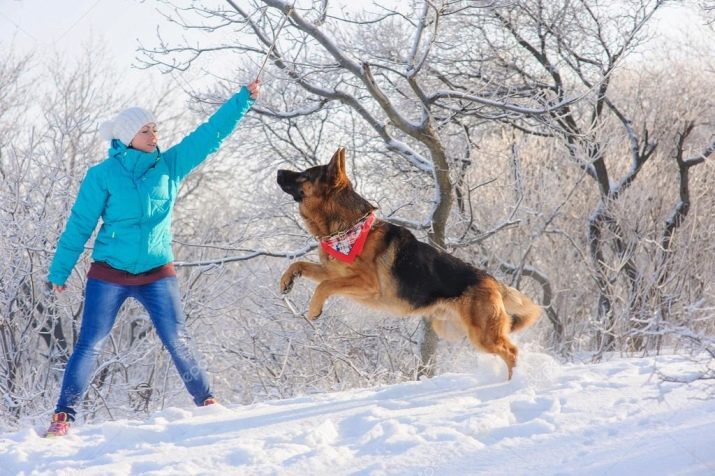
You should not think that your pet has any extraordinary abilities and from birth is ready to perform the most complex tasks. The first commands should be simple, short and very clear. As soon as you understand that they are given to a pet with ease - complicate them, upgrade, add new tricks.
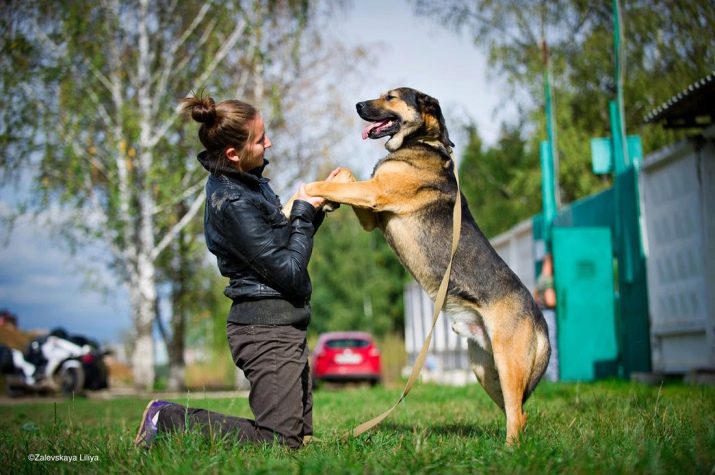
Below you will find a list of commands, which should be applied to dogs of the breed VEO during their growing months.
- Up to 2 months. At this time, the breeder should pay great attention to the socialization of the animal - this includes daily walks in the company of other people and animals. In addition, it is worth accustoming the shepherd to a leash, collar and muzzle - these animals have extremely well-developed fangs, as well as enough strength to harm themselves or someone else. An obligatory task at this age is to ensure that the pet follows you on the heels and is accustomed to walking on the street.
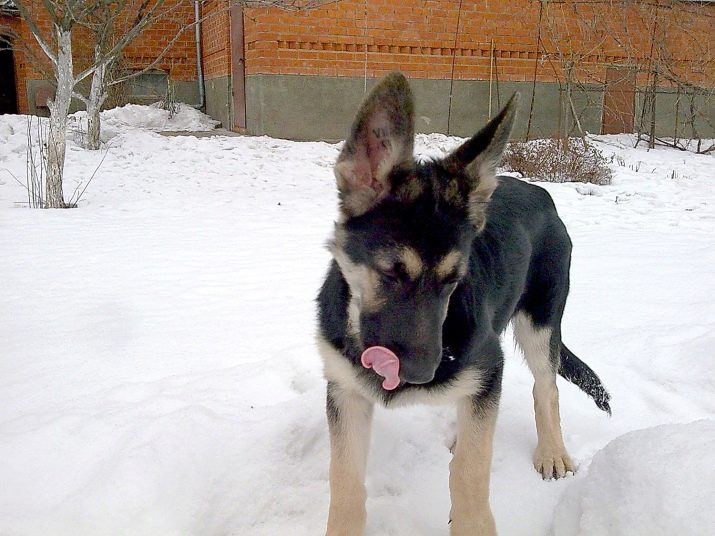
- From 2 to 3 months. Around this age, East European shepherd dogs are usually bought and sold. During this period, the dog must finally get used to his nickname, be able to cope only on the street, and also perform elementary commands such as “place”, “fu”, “voice”, “sit”, “to me”.
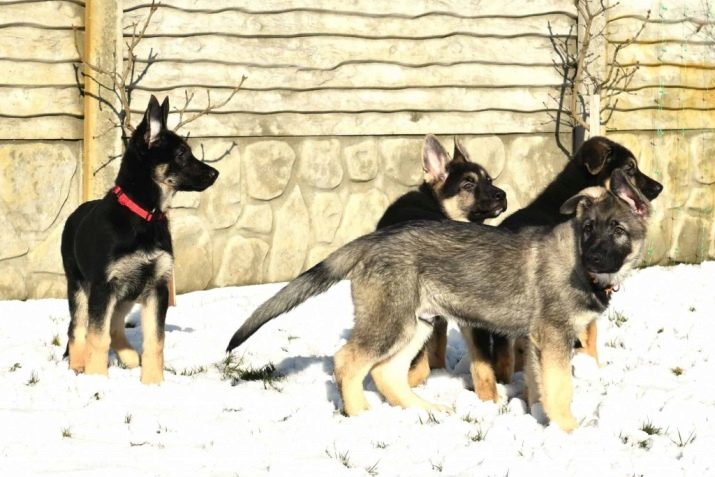
- From 3 months to six months. At this time, it is worth paying more attention to regular physical activity, as well as to performing more complex tasks. An ideal venue for this kind of training would be a special court for dogs with barriers, stairs and levels. Here it is worth giving preference to complicated teams that require the dog to be more persevering or, conversely, actions: “lie down”, “aport”, “give”, “forward”, “take”, “next”, “paw”, “barrier” .
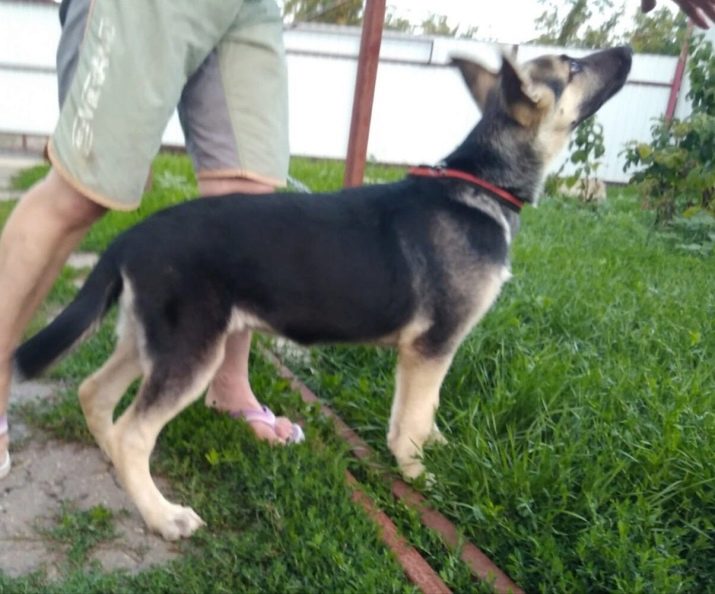
- From six months to 8 months. From this period depends on what function your pet will perform in everyday life. Usually at such a time it is advised to give dogs for vocational training: searching for objects by smell, guarding things, stalking and attacking violators, offering objects (used in hunting).
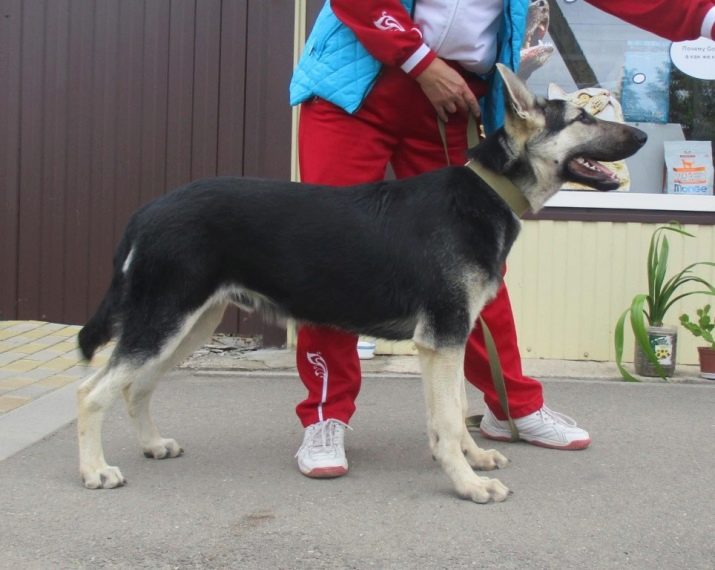
- Up to one and a half years. Up to this period, your dog must undergo a general training course (or OKD) - this is the standard procedure for training thoroughbred dogs. The course will help the owner to determine the suitability of the dog for the selected service and will correct problem angles in training.
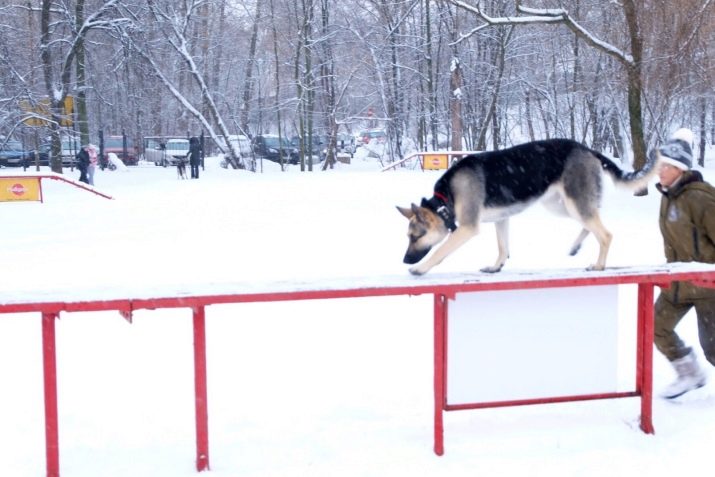
Suitable nicknames
Choosing a nickname for a dog is worth it from birth - by the age of 3 months, the pet should get used to it and realize that this combination of sounds refers to it. Below you can find a list of successful names of the breed VEO for boys and girls.
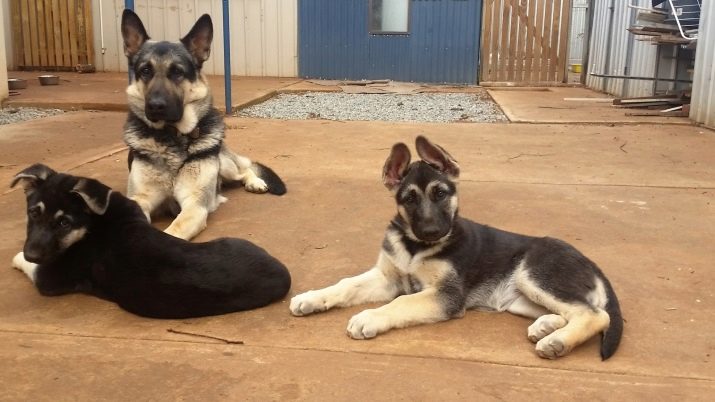
It should be understood that the choice of nickname for any dog depends on several factors.
- color: Bagheera, Heat, Sapphire, Rainbow, Casper, Diamond;
- character features: Excitement, Fierce, Umka, Spark, Satyr;
- pedigree: Lady, Earl, Baron, Lord, Queen;
- activity: Whirlwind, Tikhon, Storm, Thunderstorm;
- sports achievements: Champion, Favorite, Ideal.
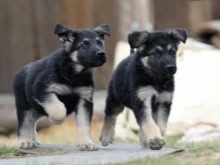
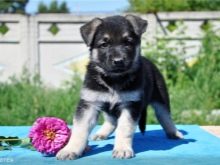

Nicknames can also be selected by association with:
- famous personalities - Caesar, Hephaestus, Athena, Arthas, Neptune, Eve, Tiffany, Elsa;
- natural phenomena - hail, lightning, tornado, wave, dew;
- abstract objects and images, and here the breeders are unlimited in their fantasies - Perlovka, Foil, Nail, Light Bulb, Bell;
- settlements, geographical objects and regions - Texas, Volga, Siberia, Moscow, Mir;
- space objects - Star, Venus, Saturn, Comet, Mars;
- flowers and plants - Chamomile, Gooseberry, Rose, Peony, Mint;
- other animals - Lynx, Trotter, Wolf, Fox, Capercaillie, Lion, Zebra.
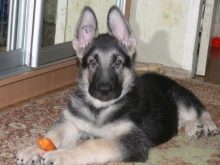
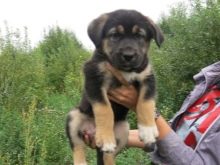
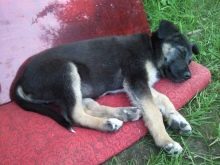
Owner reviews
After studying the reviews from various online resources, we can conclude that most breeders positively evaluate the protective functions of this breed. In general, VEO specimens act precisely as watchmen, hunting dogs or guide dogs.

Of the main positive qualities, loyalty, dedication, loyalty, and quick wits are most often mentioned.
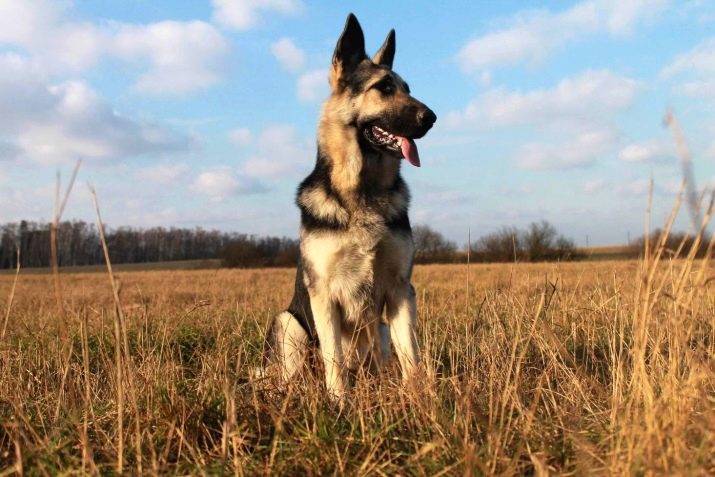
The only negative point that some breeders note is the care of the animal's hair. However, these same people notice that this care is much easier than caring for most of the long-haired dog breeds.
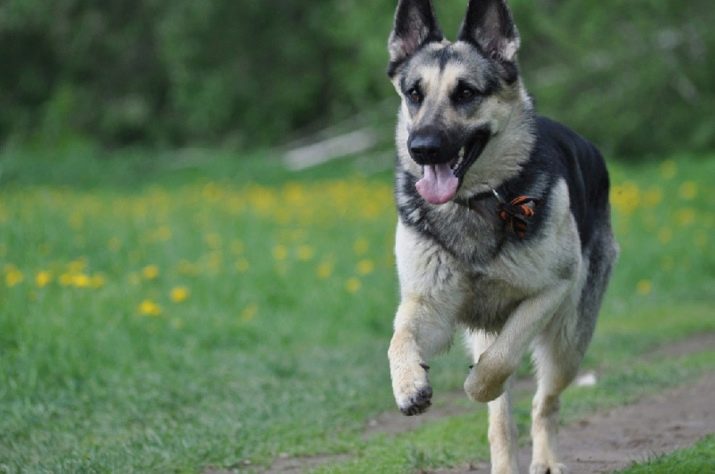
All about the East European Shepherd Dog, see the video below.
